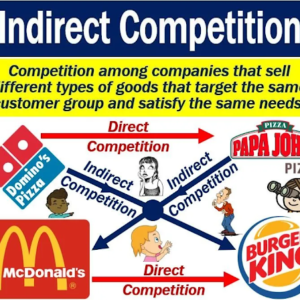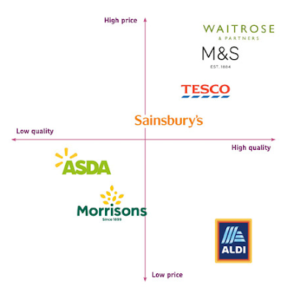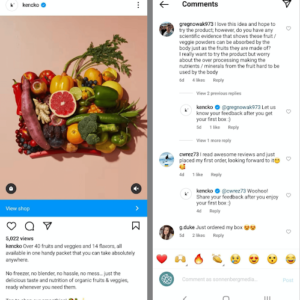How To Research Competitors On Instagram
Instagram seems to be going the TikTok route right now. The platform shows users different, tailored content, regardless of whether the viewer follows those creators’ accounts.
Several Instagram users are dismayed by this change. But this may be handy for your business. Through this recent implementation, you can present your content to a broader, relevant market.
But before you enjoy these new and promising Instagram benefits, you may want to check what your competitors are doing. You share the same audience with your competitors. Therefore, understanding their Instagram strategies can help you enhance your own technique. So, this article will show you how to research competitors on Instagram. Let’s get right into it.
1. Search Relatable Accounts Using the Right Keywords
One of the easiest ways to research competitors on Instagram is through the social network’s inbuilt search functions. Most businesses on Instagram are usually optimized to show up when users search using particular keywords.
For example, most business owners pick appropriate business categories while creating an Instagram business account. This tells the Instagram search engine algorithms what your business is all about. Not only that, but it also makes it easier for the algorithm to show your business profile when users do searches using relevant keywords.
You can use that to your advantage during competitor research. You’ll come across your competitors by simply searching for relevant keywords within your niche. For example, if you were to search for “Vegan Bakery,” the following results will appear. And the results would be even more relevant if you grant Instagram permission to track your location.
Therefore, if you were in the vegan baking niche, you’d already know how other businesses in that industry are running their Instagram campaigns. You can start exploring their social media profiles. See how they’ve written their bios, the links they’ve added to their bios and where those links go, the types of content they post, and so on.
Essentially, the Instagram search function gives you a convenient starting point. And you don’t have to pay for it.
2. Identify the Type of Competitors: Direct or Indirect
Once you have your list of competitors, identify whether they are direct or indirect. Direct competitors are businesses that sell the same type of product as yours. An example would be Domino’s vs. Papa John’s. Indirect competitors are businesses that serve an alternative or more general product. Papa John’s and McDonald’s are indirect competitors.
So how do you identify these competitors on Instagram?
You need to look at their content. Assess their posts, stories, reels, and captions. This information lets you understand how to market to niche and general audiences.
The benefits of assessing direct competitors are pretty straightforward. By looking at your direct competition, you understand their Instagram strategies. This allows you to tweak your marketing strategy accordingly.
Meanwhile, analyzing indirect competitors can help you identify new opportunities to retain your target audience and potentially expand your reach. For example, if you’re a decor business and saw a DIY decor training brand doing well, you may consider creating a DIY segment within your business. This could mean giving your target audience the option of setting up their own decor while giving them the learning materials they need.
3. Analyze Their Market Position
Market positioning is a brand’s ability to distinguish itself from its competitors. This distinction is achieved by creating a unique brand identity in the customer’s mind. There are various ways to go about market positioning:
- Unique product benefits. What characteristics does your product have that the competition doesn’t have?
- Competitive branding. Making your brand appear more premium and of higher quality than the competition. (e.g., Apple vs. Android)
- Competitive pricing. Price your item to compete in market share. For instance, you could make your products 10% cheaper than the competition.
To effectively assess the competitive landscape, map your competition’s market position. Create four quadrants corresponding to high and low values of two key qualities. Then, place your competitors accordingly in these quadrants. In the case below, these key qualities are “price” and “quality.”
Though “price” and “quality” are the commonly-used values, there are other value pairs you can try. Try “luxury” and “price” or “taste” and “quantity.”
After you’ve assessed the industry landscape, implement some changes to your product and branding. Doing this can create a market presence that will appeal better to your target market. Consequently, you can improve your market share in the industry.
Let’s say you’ve analyzed rival clothing brands’ Instagram shops. You then see that the competition has lower prices than yours.
In this case, you can market yourself as a more high-quality clothing brand. Be sure to create social media branding that matches the brand identity you’re going for. The premium branding can justify your higher costs than the others. This is helpful if pricing lower isn’t sustainable for you.
4. Compare Your Engagement Metrics
Measuring your performance against your competitors is essential to competitive analysis. Use engagement metrics to determine how effective your Instagram strategy is compared to the competition.
When researching competitors, look at quantitative and qualitative engagement metrics. These will help you formulate a complete assessment.
Quantitative Metrics
Numbers measure quantitative metrics. They are more straightforward as a result. An example of quantitative metrics is the follower count. Track how many followers your competitor has acquired within a given time period using tools like Hootsuite, then compare it to your figures.
You should also assess how many posts they have, the number of comments they usually get, and the average number of likes for each post.
Qualitative Metrics
Qualitative metrics are a bit more complex than measuring quantitative metrics. These metrics assess the quality of post content, copy, and comments.
Qualitative metrics may also involve analyzing the competitor’s top posts, top hashtags, tone & voice of the IG posts, and general audience sentiment. The analysis gives you insights to explain some of the numbers witnessed during quantitative analysis.
For example, you may learn that the business does brand collaborations regularly. And that these posts get the most engagement. You’ll need to explore the same strategy for your business. So it may be time to use an email address finder to get the right contact details of potential brand partners and pitch your ideas.
Assessing competition metrics allows you to understand how well they’re performing. It also gives you insight into the marketing strategies that appeal to your target market.
Suppose you see overwhelmingly positive comments on meme-type posts. But less engagement around branded posts. In that case, you can hypothesize that your market is interested in memes and humor. You can then decide to create more of this content to best your competitors.
5. Figure Their Strengths and Weakness
Assessing your competition’s metrics lets you poke holes in their social media strategy. This allows you to see a competitor’s strengths and weaknesses.
Let’s say you notice a rival business has many followers, but its content is receiving negative reactions. If you see this sentiment across your competitor’s posts, then you’ll know that although they have higher brand awareness, they’re struggling to create relevant content.
This may be a result of lackluster market research; hence, their content is unable to resonate with the audience.
Since we already know that the rival business’ engagement level isn’t too good, we can invest in market research. This research will let us know what content entices the market. We can also learn from the comments the types of content the audience doesn’t like.
With this information in hand, we can go on to produce much better content that may help us attract the competitor’s audience.
Knowing a rival business’ strengths and weakness isn’t just for Instagram marketing. It’s a fundamental principle in any marketing effort. You can acquire a higher market share by understanding competitors’ strengths and weaknesses.
In Closing
Competitor analysis helps you understand where you stand in the competitive business landscape. Data from competitive analysis should inform your various business decisions. This helps your business acquire a better market share.
This article discussed the vital steps to take to research competitors on Instagram.
First, search relatable Instagram accounts using the right keywords. After you’ve generated your list of competitors, determine if they are direct or indirect competitors. Then, analyze their market position. This will let you know how to market to potential customers. Next, compare your engagement metrics with your competitors’ metrics. Finally, assess their strengths and weaknesses.
Follow these tips, and you can conduct a successful competitive analysis to drive your business forward.












